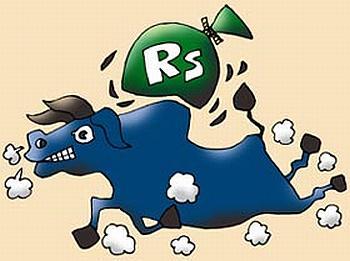 | « Back to article | Print this article |
How to benefit from bonus shares, stock splits, buyback offers
Most of the people who invest in stocks ignore one of the most fundamental truth regarding owning stocks: You buy partial ownership in the company when you buy the stock of a particular company. This fact loses importance because of two reasons: First, the ownership percentage is very less and the second, everybody is basically involved in calculation of profit and loss as a result of stock price movement in the secondary market.
But what's so special about this fact? If the ownership percentage is so less and primary reason for investing in stocks is expectation of gains, why should one worry about the ownership.
In this article I would be presenting the ownership angle of stock market investment even though the percentage of ownership is less as understanding this perspective will present an opportunity to extract more profit out of one's investment.
What I mean to say is if we own something we should be aware what's happening with that asset. Who are the people taking decisions regarding that asset and how those decisions impact the share price?
We all know every company is run by a management team and they are the people who supposedly take decisions which will ultimately benefit the investors. These actions or decisions are normally known as corporate actions.
So let's try to figure out what are different kinds of corporate actions, how exactly they influence the share prices and how you can use these opportunities for generating profit.
Click NEXT for more
The author Bimlesh Singh is a CFA Level 2 candidate currently working as a business analyst in financial domain. He holds a Bachelor's degree from IT-BHU. He can be reached at bimleshs@gmail.com.
How to benefit from bonus shares, stock splits, buyback offers
Purpose of corporate action
Corporate action is any step taken by management team which affects the security issued by a public company. Public company tries to maximise the shareholders wealth by taking such steps.
Common corporate actions which increase shareholders wealth are dividend distribution, stock splits, buybacks, and corporate restructuring via mergers and acquisitions.
Let's analyse them one by one in the next section.
Click NEXT for more
How to benefit from bonus shares, stock splits, buyback offers
Corporate actions and stock price movement
1. Dividends
Dividend declaration is a corporate action by which management distributes a part of company earning to the shareholders.
How to benefit from this news: Let's say stock price for company A is Rs 100 today. There is a dividend declaration of Rs 2 per share. That means each stock holder will get Rs 2 per share as cash if s/he holds stocks of company A on or before ex-dividend date.
As markets react to every good news stock price of company A will reach Rs 102 or even higher before ex-dividend date.
As dividend declaration results in stock price appreciation, make a list of good dividend declaring companies and figure out in which quarter and round what date they declare dividends. Invest in them before dividend declaration date and benefit from price appreciation.
Click NEXT for more
How to benefit from bonus shares, stock splits, buyback offers
2. Share buyback
Buy back is basically re-acquisition of companies own shares. Buyback's reduces number of shares and hence increases earning per share.
How to benefit from this news: If based on your fundamental research you find out that a company is undervalued and at the same time company management announces a buyback offer it's wise to invest in that stock. When the market condition improves you will reap a handsome benefit out of this investment.
Click NEXT for more
How to benefit from bonus shares, stock splits, buyback offers
3. Stock split/Reverse stock split
If due to some reason stock price of a company is too high or too low and hence illiquid, companies announce stock splits/reverse stock splits to increase the liquidity of stocks. This basically increases (stock splits) or decreases (reverse stock splits) the number of stocks without changing the market cap of the company.
How to benefit from this news: Stock splits/Reverse splits normally increase the liquidity of stocks and now there are more buyers and sellers for the same stock.
Normally companies announce splits if they are quite confident about the future growth prospects. One can invest and benefit from this news if the company is a quality company.
Click NEXT for more
How to benefit from bonus shares, stock splits, buyback offers
4. Rights issue
This corporate action gives privilege to existing shareholders by offering them to buy additional shares of the company before going to the open market.
How to benefit from this news: Normally a company offers rights issue if it's in need of additional capital. Investors should study the need for this capital requirement and if they feel the capital invested by the company will be profitable, they should apply for the rights issue if it's offered at price which is considerably less that current market price of the stock.
Click NEXT for more
How to benefit from bonus shares, stock splits, buyback offers
5. Mergers and acquisitions
Merger happens when two companies decide to merge and one of them surrenders its stock to other one. Acquisition happens when one company buys majority stake in the target company. There is no surrender of stocks involved here.
How to benefit from this news:
Normally whenever target company is acquired the acquiring company has to pay a premium for this purchase which in turn results in increase in stock price of the target company in the short term.
As the acquiring company has to pay the premium its stock price decreases in the short term. An investor can use acquisition news to buy into target company and sell parent company in order to gain in the short term.
Conclusion
Corporate actions present an opportunity to earn benefit in the short term so it's profitable to track the announcements. One should be cautious, however, as price movements happen only for the short term, so one should get out as soon as s/he is in profit.







